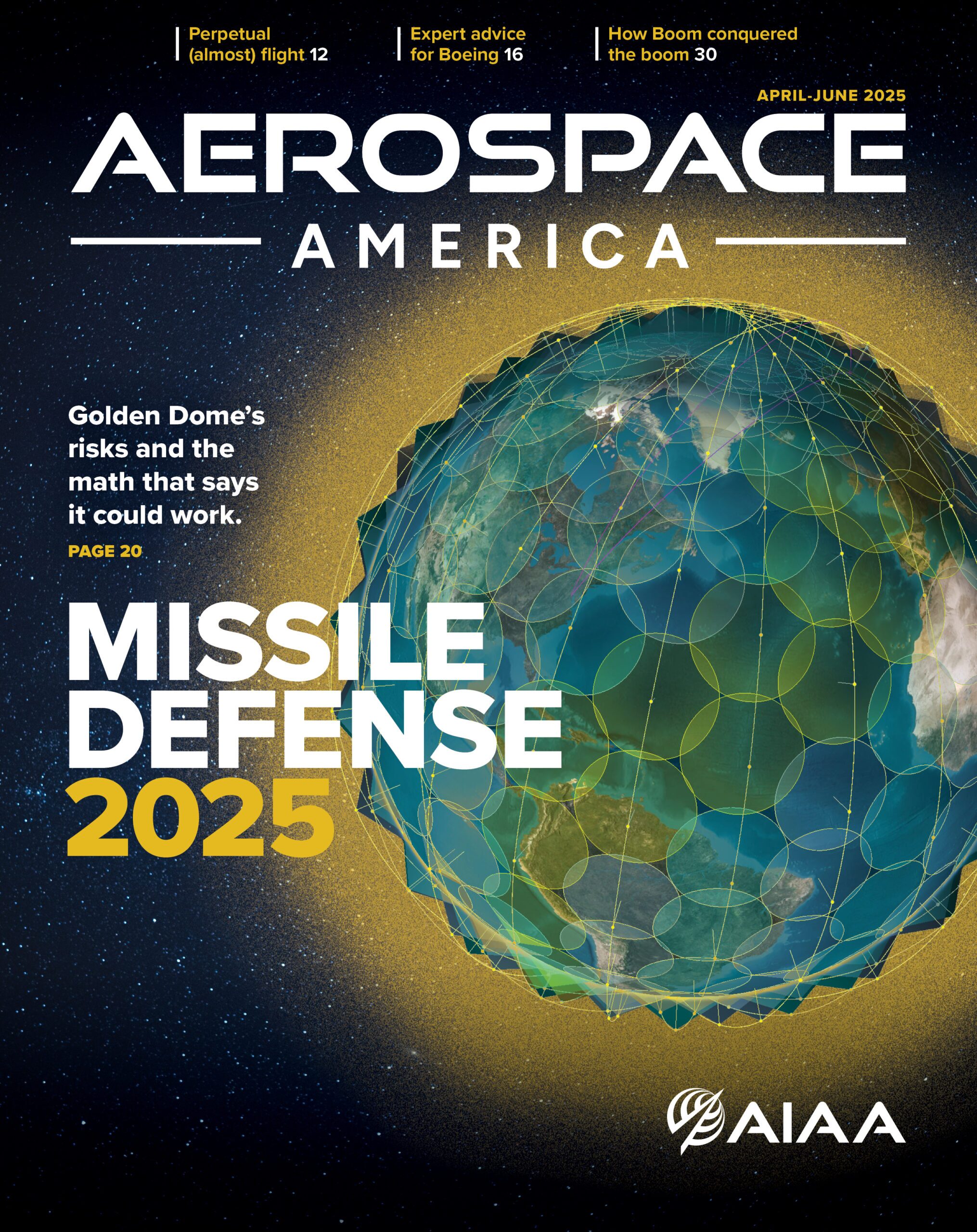Stay Up to Date
Submit your email address to receive the latest industry and Aerospace America news.
NASA’s Perseverance rover photographed its tracks as it traversed up the rim of Mar’s Jezero Crater in late 2024. Credit: NASA/JPL-Caltech
Prototypes of surface rovers destined for asteroids, the moon and Mars ordinarily undergo physical tests on sand, or simulated regolith, on Earth to ensure their wheels provide enough traction. But researchers have discovered that this terrestrially centered practice has been consistently overestimating the grip that rover wheels will actually attain on their celestial targets.
The reason? Traction tests under Earth’s strong gravity do not account for the fact that the lower pull of gravity on the regolith particles on the moon and other destinations makes those granular surfaces less compact and rigid than on Earth — and so less able to support a vehicle.
This could lead to rovers losing traction and getting stuck, as NASA’s Spirit rover famously did on Mars in 2009, said Dan Negrut of the Simulation Based Engineering Laboratory at the University of Wisconsin-Madison, whose team made the finding.
“If a rover starts spinning its wheels in place, it digs itself in, and it’s harder and harder to get it out,” he said.
Their paper, “A Study Demonstrating That Using Gravitational Offset to Prepare Extraterrestrial Mobility Missions Is Misleading,” was published online in late May in the Journal of Field Robotics and is slated to appear in an upcoming print issue.
Negrut’s team was commissioned, as part of a wider NASA STTR program, to use his lab’s 3D physics simulation software, Chrono, to investigate the robotic traction control and wheel grip characteristics of VIPER. This water-seeking rover was slated to be launched to the moon last year, but cost increases and schedule delays prompted NASA to put the mission on hold.

While VIPER’s future remains unclear, the UW-Madison researchers were still able to leverage previous testing NASA had completed. They compared the results of physical traction tests performed at NASA’s Glenn Research Center with a subscale prototype, whose mass was one-sixth that of the operational VIPER, to mimic its weight in lunar gravity, with the figures that Chrono produced from lunar simulations of the full-size vehicle.
And they got a surprise: “When in the simulator, we put the mass of the vehicle at its true 500 kilograms, and changed the gravity to that of the moon, and then ran the simulations, the results were not the same for the wheel slip and slope performance of the one-sixth mass physical test prototype on Earth. So that’s when we really started to look into things,” said Negrut.
After comparing the physical and simulated datasets, they found their simulation’s accurate modeling of the lower gravitational pull on the lunar surface regolith grains had accounted for the difference: “The moon’s surface is fluffier,” compared to the pretty solid terrain on Earth, said Negrut. Because such soils shift more easily under wheel motion, they could create less traction than terrestrial tests suggest.
According to Negrut, this indicates that NASA and its contractors need to completely rethink their reliance on physical tests, in which they attempt to offset the effects of Earth’s gravity by cutting the mass of the prototype —as VIPER’s was — or using helium balloons or cranes to partly support a trundling prototype. In the future, perhaps the preferred method should be physics‐based “terramechanics” simulation models like Chrono, which is freely available on the Github open-source repository.
It’s hard to visualize the issue, but Negrut offered this thought experiment: “Imagine you have infinite gravitational pull: your powdery surface grains would become like cement because there’s no relative motion between the particles. It’s all pulled down so darned hard that it provides all the support you want. That would be nice for a rover — but it just isn’t like that, as gravity is lower than Earth’s, so the surface becomes fluffy and wheels start digging into it.”
The UW-Madison work feeds into a wider debate. “Soil mechanics is a complex topic, on Earth as well as on celestial bodies, and many parameters are relevant: grain size and shape, cohesion, porosity and, on Earth, humidity,” said Stephan Ulamec, a planetary geophysicist and a research associate at DLR, the German Aerospace Center, in Munich.
“On another planetary body, we usually know very little about the properties until we get there.”
It’s partly with such discoveries in mind that Ulamec’s team plans to send a diminutive rover to the Martian moon, Phobos, aboard the Japanese Space Agency’s Martian Moons Exploration sample return mission that’s slated to launch in October next year.
“We have done a lot of simulations, assuming a wide range of possible surface parameters, but quite some uncertainty remains,” he said. To learn more, DLR’s IDEFIX rover will carry cameras beneath it to assess regolith grain compaction, as it moves at a cool 1 millimeter per second to stop it flying off into space in Phobos’ ultralow gravity — which is 2,000 times lower than Earth’s.
About Paul Marks
Paul is a London journalist focused on technology, cybersecurity, aviation and spaceflight. A regular contributor to the BBC, New Scientist and The Economist, his current interests include electric aviation and innovation in new space.
Related Posts
Stay Up to Date
Submit your email address to receive the latest industry and Aerospace America news.




